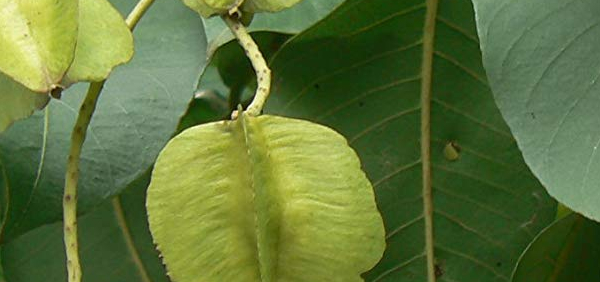kasamarda :

Cultivation:
Coffee senna has a wide native range from the subtropics of S. America through to southern N. America and the Caribbean. It grows mainly at lower elevations. It favours moister areas in the tropics, in Puerto Rico it grows in areas where the mean annual rainfall is within the range 1,000 - 2,200mm.Prefers a deep, well-drained, moderately fertile sandy loam and a position in full sun.
Originally native of the Americas, the plant is widely cultivated through the tropics and subtropics and is commonly naturalized in many areas. While coffee senna can be a weed of cultivated fields and plantations, it is principally a problem because it accumulates in heavily grazed pastures.
The plant flowers throughout the year in non-seasonal climates.
The plant has a disagreeable odour when crushed.
There are conflicting reports on whether or not this tree has a symbiotic relationship with certain soil bacteria, so it is unclear as to whether this tree fixes atmospheric nitrogen.
Propogation:
Like many species within the family Fabaceae, once they have been dried for storage the seeds of this species may benefit from scarification before sowing in order to speed up and improve germination. This can usually be done by pouring a small amount of nearly boiling water on the seeds (being careful not to cook them!) and then soaking them for 12 - 24 hours in warm water. By this time they should have imbibed moisture and swollen - if they have not, then carefully make a nick in the seedcoat (being careful not to damage the embryo) and soak for a further 12 hours before sowing[]. Some 95% of scarified seeds sown in potting mix germinated between 5 and 36 days after sowingHarvesting:
- Flowering: March, June
- » Classification and names of kasamarda
- » Synonyms and definitions of kasamarda
- » Drug Properties of kasamarda
- » Chemical Constituents of kasamarda
- » Standardization of kasamarda
- » Parts used and Dosage of kasamarda
- » Morphology and Histology of kasamarda
- » Distribution and Conservation of kasamarda
- » Cultivation of kasamarda
- » kasamarda in the market
- » Medicinal Uses of kasamarda
- » Researches and clinical trails of kasamarda
- » kasamarda in other sytems of medicine
- » Ayurvedic formulations with kasamarda
- » Images of kasamarda












